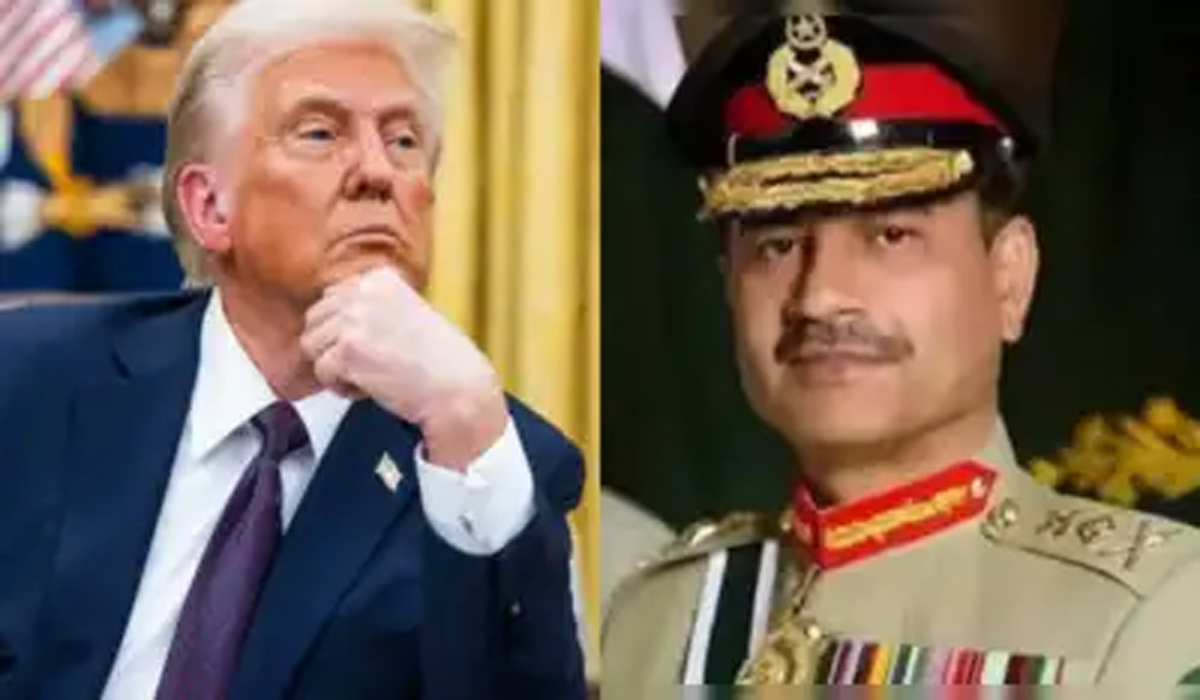
In an unprecedented move that’s resonating across diplomatic circles, U.S. President Donald Trump hosted Pakistan’s Army chief, General Asim Munir, for a White House luncheon. It’s the first time ever that an American president has formally entertained a Pakistani military leader at this level who isn’t also the country’s head of state. Seated in the Oval Office with Secretary of State Marco Rubio and Middle East envoy Steve Witkoff, Trump praised Munir for helping to defuse tensions with India. “I want to thank him for not going into war,” Trump said.
“Two smart people—the Pakistan army chief and Prime Minister Modi—decided not to let it escalate.” His words—the strongest public U.S. praise yet for Indian restraint— underscore a momentous shift in tone from decades of American diplomacy. Following lunch, the Pakistan Army announced that the invitation marked “a significant moment in the ongoing efforts to reinforce the longstanding partnership between Pakistan and the United States, built upon shared objectives of peace, stability, and prosperity.” It’s part of a wider tour by Munir, who’s already met senior officials at the Pentagon, State Department, and U.S. Central Command in Florida. While heads of state like Ayub Khan, Zia ul-Haq, and Musharraf have visited the White House before, Munir, who is not Pakistan’s president, represents a novel evolution. Some in New Delhi regard it as a strategic maneuver by Trump—a calculated engagement with Pakistan’s military leadership, aimed at bilateral gains.
For New Delhi, these events raise questions. Is Washington subtly repositioning its stance in South Asia? Congress sources suggest this signals a re-entry of Pakistan as a key U.S. partner. After all, U.S.–Pakistan ties have often revolved around Islamabad’s intelligence collaboration and strategic geography. It’s no secret that India’s diplomats watched cautiously when Trump— leaning on nostalgia for trade incentives—repeatedly took credit for “settling” IndiaPakistan skirmishes. But in a recent statement, PM Modi firmly told Trump: “India does not accept third-party mediation.” India insists its cease-fire was a unilateral decision—not brokered via Washington. Yet Trump’s statement that both sides made choices to avoid war and Munir’s welcoming posture suggest Washington is using Pakistan to shore up elements of trilateral counter-terrorism, mineral exploration, cryptocurrency interests, and regional s e c u r i t y f ra m e w o rk s involving Iran.
Analysts note that Trump has long prioritized trade deals, tech, and rare earth minerals. Pakistan’s nascent Crypto Council, as well as its mineral reserves, are drawing at t e n t i o n — two a re a s Trump has publicly mused about. Indeed, Pakistan has opened discussions with U.S. firms on these fronts. Complementing this economic overture, calls for broader trade cooperation dovetail with Trump’s commercial playbook. Michael Kugelman of the Wilson Center observed that Trump treats diplomacy as transactional: “What can Pakistan do for us, what can we do for you?” This luncheon reflects that mindset—uniting geopolitical, economic, and strategic vectors. Despite the celebratory tone in Islamabad—with I S P R u s i n g p h ra s e s l i k e “ l o n g s t a n d i n g partnership,” Pakistan’s overtures remain delicately balanced. U.S. officials, including veteran diplomat Marvin Weinbaum, insist: “Nothing is permanent in this administration.” Today’s photograph could be tomorrow’s footnote. The U.S. relationship with Pakistan isn’t a monolithic alliance but rather a flexible bridge—used when convenient. Would this make New Delhi uneasy? Perhaps— but India counsels calm.
In recent years, India has cultivated a reputation as a more dependable and transparent strategic partner, aligning closely with the U.S. on Indo-Pacific security, vaccines, and technological cooperation. Still, in geopolitical chess, the White House banquet is more than etiquette—it reflects shifting priorities: trade, counter-terror, posture in Middle East rivalry, and oversight of nuclear arsenals. As Dr. Kugelman noted, the luncheon can’t be viewed solely through the lens of Iran-Israel tensions. It represents U.S.-Pakistan relations entering new territories—cryptocurrency, rare minerals, and security c o o r d i n a t i o n . I n d i a , meanwhile, maintains its course, asserting sovereign d e c i s i o n – m a k i n g a n d ensuring no one takes undue credit. Post-lunch trips to Department of Defense and State suggest enhanced m i l i t a r y – t o – m i l i t a r y coordination. Pakistan’s intelligence leadership linking up with senior U.S. officials further underscores this deepening engagement. India’s next diplomatic steps aren’t reactive but assertive.
PM Modi has already declined any mediation—even as Trump publicly claimed credit for the cease-fire. Indian officials stress that their decisions were independent and driven by their own security calculus. T r u m p’s t w o – h o u r luncheon with General Munir was both symbolic and strategic. It signals Washington’s readiness to tap Pakistan’s military leadership as a vital diplomacy pivot, especially in the broader context of South Asia and the Middle East. For India, it serves as a reminder that global diplomats often weigh various equations—and clear messaging matters.
As Trump says goodbye and diplomacy reshapes itself, India watches—but with intent to maintain control of its own narrative. In Washington, policy analysts emphasize it’s like watching “two chess grandmasters—P.M. Modi and Gen. Munir—moving pieces, with President Trump observing and occasionally moving his own.” And in this game, India asserts it will not be checkmated
